
On January 28, 1986, the Space Shuttle Challenger broke apart 73 seconds into its flight, killing all seven crew members aboard. The spacecraft disintegrated 46,000 feet (14 km) above the Atlantic Ocean, off the coast of Cape Canaveral, Florida, at 11:39 a.m. EST. It was the first fatal accident involving an American spacecraft while in flight.

The Rogers Commission Report was written by a Presidential Commission charged with investigating the Space Shuttle Challenger disaster during its 10th mission, STS-51-L. The report, released and submitted to President Ronald Reagan on June 9, 1986, both determined the cause of the disaster that took place 73 seconds after liftoff, and urged NASA to improve and install new safety features on the shuttles and in its organizational handling of future missions.

The Columbia Accident Investigation Board (CAIB) was an internal commission convened by NASA to investigate the destruction of the Space Shuttle Columbia during STS-107 upon atmospheric re-entry on February 1, 2003. The panel determined that the accident was caused by foam insulation breaking off from the external fuel tank, forming debris which damaged the orbiter's wing, and that the problem of "debris shedding" was well known but considered "acceptable" by management. The panel also recommended changes that should be made to increase the safety of future shuttle flights. The CAIB released its final report on August 26, 2003.

John McCreary Fabian is a former NASA astronaut and Air Force officer who flew two Space Shuttle missions and worked on the development of the Shuttle's robotic arm. He later led the Air Force's space operations.

Brewster Hopkinson Shaw Jr. is a retired NASA astronaut, U.S. Air Force colonel, and former executive at Boeing. Shaw was inducted into the U.S. Astronaut Hall of Fame on May 6, 2006.

Robert Lee Stewart is a retired brigadier general of the United States Army and a former NASA astronaut.

Roy Dubard Bridges Jr. is an American pilot, engineer, retired United States Air Force officer, test pilot, former NASA astronaut and the former director of NASA's John F. Kennedy Space Center and Langley Research Center. As a command pilot, he has over 4,460 flying hours, and is a decorated veteran of 262 combat missions during the Vietnam War. He retired as a U.S. Air Force major general, last serving as the Director of Requirements, Headquarters Air Force Materiel Command, Wright-Patterson Air Force Base, Ohio, from June 1993 until his retirement. He is married with two adult children.
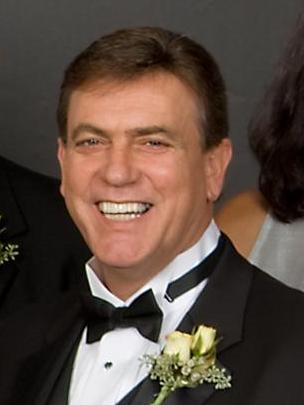
Chief Warrant Officer 4 Thomas John Hennen is a United States Army warrant officer and NASA payload specialist astronaut who flew aboard Space Shuttle mission STS-44 as a payload specialist.

Joseph William Ashy, is a retired United States Air Force (USAF) general who was commander in chief of North American Aerospace Defense Command and United States Space Command, and commander of Air Force Space Command, headquartered at Peterson Air Force Base, Colorado. As commander of NORAD, General Ashy was responsible for the air sovereignty of the United States and Canada, as well as for providing tactical warning and attack assessment. As USCINCSPACE, he commanded the unified command responsible for directing space control and support operations including theater missile defense. As COMAFSPC, he directed satellite control, warning, space launch and ballistic missile operations missions through a worldwide network of support facilities and bases.

Michael C. Kostelnik, Major General, USAF (Ret.) was the Assistant Commissioner, Office of Air and Marine, U.S. Customs and Border Protection before retiring from federal service.
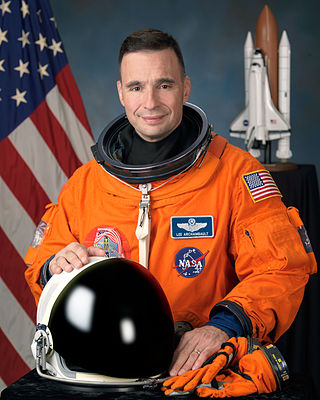
Lee Joseph "Bru" Archambault is an American test pilot and former NASA astronaut. He has logged over 4,250 flight hours in more than 30 different aircraft. Archambault is married with three children. His hobbies include bicycling, weightlifting, and playing ice hockey. Archambault has received numerous awards and honors throughout his life. He has also flown two Space Shuttle missions, as pilot of STS-117 in 2007 and as commander of STS-119 in 2009. Archambault left NASA in 2013 after a 15-year career with the agency in order to become a test pilot for Sierra Nevada Corporation on their Dream Chaser orbital spaceplane project.
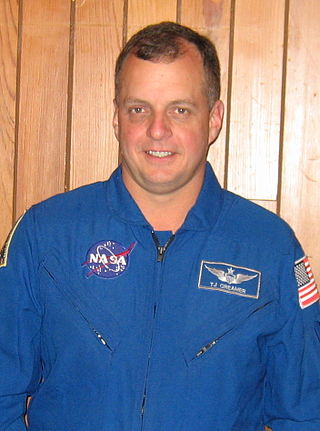
Timothy "TJ" Creamer is a NASA flight director, retired astronaut and a colonel in the United States Army. Creamer was born in Fort Huachuca, Arizona, but considers Upper Marlboro, Maryland, to be his hometown. He is married to the former Margaret E. Hammer. They have two children.

Colonel Benjamin Alvin Drew is a United States Air Force officer and a former NASA astronaut. He has been on two spaceflights; the first was the Space Shuttle mission STS-118 to the International Space Station, in August 2007. Drew's second spaceflight took place in March 2011 on STS-133, another mission to the International Space Station. STS-133 was Space Shuttle Discovery's final mission. Drew took part in two spacewalks while docked to the station. Drew was the final African-American to fly on board a Space Shuttle, as the final two Space Shuttle missions, STS-134 and STS-135, had no African-American crew members.

Joseph K. Spiers is an aerospace engineer and retired United States Air Force general, reaching the rank of major general during his military career.
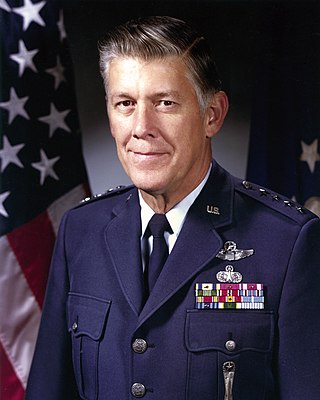
Lawrence Albert Skantze was a four-star general in the United States Air Force (USAF). He served as commander, Air Force Systems Command at Andrews Air Force Base, Maryland.

Lieutenant General Larry D. James is a former senior officer in the United States Air Force and is currently a civilian NASA administrator. He is the deputy director of NASA's Jet Propulsion Laboratory, where he also acted as the interim director from August 21, 2021 to May 16, 2022. He acts as the Laboratory's Chief Operating Officer responsible to the Director for the day-to-day management of JPL's resources and activities. This includes managing the Laboratory's solar system exploration, Mars, astronomy, physics, Earth science, interplanetary network programs, and all business operations. These activities employ 5000 scientists, engineers, technicians, and business support personnel, generating $1.8 billion in annual revenues. Prior to his current role, he served as the Deputy Chief of Staff for Intelligence, Surveillance and Reconnaissance, Headquarters United States Air Force. James' prior commands included the 14th Air Force and Joint Functional Component Command for Space from Vandenberg Air Force Base in California.

Lieutenant General Edmund Francis O'Connor was an American Air Force lieutenant general and command pilot who was vice commander, Air Force Logistics Command, with headquarters at Wright-Patterson Air Force Base, Ohio.
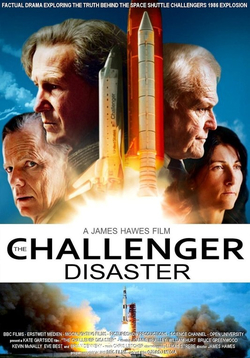
The Challenger is a 2013 TV movie starring William Hurt about Richard Feynman's investigation into the 1986 Space Shuttle Challenger disaster. The film was co-produced by the BBC, the Science Channel, and Open University, and it premiered on 12 May 2013 on BBC2.

Richard Charles Henry was a lieutenant general in the United States Air Force who served as commander of the Space Division, Air Force Systems Command, Los Angeles Air Force Station, Calif. He also served as vice commander of Space Command and as the Department of Defense manager for the National Space Transportation System.

Major General Robert Alan "Rosie" Rosenberg of United States Air Force was Director of Defense Mapping Agency from July 1985 to September 1987. Throughout his 30-year career with the U.S. Air Force, he was instrumental to the U.S. satellite program. National Geospatial-Intelligence Agency inducted him into its Hall of Fame in 2005.




















